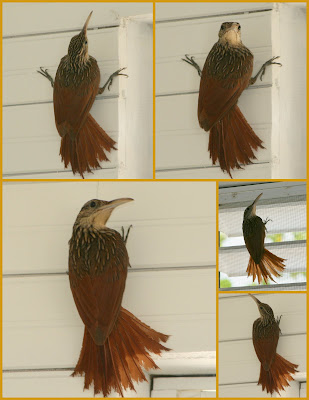You readers know that I love Belize, but there is a fly in the ointment. Or should I say flies in the ointment, sandflies, that is. Sandflies are aggravating little beasts no bigger than a speck (a 1/16th of an inch speck, to be exact). Where there is one, there are hundreds. Usually the sea breeze keeps them away, but when the breeze slacks off, the sandflies make you miserable with their constant biting. The first time we experienced sandflies in Belize while on vacation there in 1998, their bites left a tiny little flat, red circle about 3mm in diameter, and they hurt a little at the time of the bite. But the next day the sites of the bites were big red welts that itched like crazy! It took more than a week for the bites to fade away. And of course our legs and arms were covered with dozens of bites; we looked a mess.
The worst part is that sandflies are more numerous when there is no breeze and more active at night. That means that any part of your body not covered by a sheet on a hot, still night will be bitten. Covered with a sheet or covered with bites, those are your choices! So when we designed our cabana, we decided to use a very fine screen on the windows and veranda to keep the sandflies out. We had to purchase the screen in the US and take it down there with us. It turns out that the best screen is made out of nylon and you can get it pre-treated to be resistant to degradation by UV light. Even with that treatment, the screen gets fragile quickly and has to be replaced every 2 years or so. And we wind up having unsightly patches on it just to make it last that long.
So when we came back to the cabana that afternoon after visiting Sue and Chris, we immediately noticed the big hole in veranda screen and wondered how it got there. Had a twig been blown into it? No twig in sight on the veranda or on the ground below. As you could tell from the photos, the cabana is 12 feet off the ground, so it wasn’t a crab. But we patched the screen and forgot about it as we about our business.
Dennis went inside to get something and then I hear “Wilma, get your camera and come see what made the hole in the screen!” It was a bird that was still in the cabana. Poor thing had flown through the screen and hadn’t been able to find a way out. I took a couple of pictures of it clinging to the wall. Then we opened the back door and tried to shoo it out. No dice. We took screens off the windows and tried to herd it out. But it just couldn’t see that as a way out because of the louvers. Finally it was in the back bedroom which has 3 windows. Dennis took the screen off 1 of them and the bird was perched on the 3rd. I took a few more photos as Dennis took the 2nd screen down. By this time Richard, our caretaker, was helping us. Richard and I blocked off the doorway as Dennis moved toward the bird. In desperation, it finally flew to freedom through the 2nd window.
It was a very pretty little brown bird with a slightly curved, longish bill.
A friend from the village (Ralph Zuniga, who runs a wildlife tour business) stopped by to visit. As usual, we sat on the veranda with Ralph, catching up with each other since our trip last October. Ralph was the person who first showed us this property back in 2004 (click here to read about this trip). Ralph and his wife Ilna helped us immensely before we started building on the property. We showed Ralph the bird photos and he said it was a wood creeper, either a streak-headed or an ivory-billed.
After looking at all the pictures and descriptions in bird books and online, we are pretty sure it is an ivory-billed Woodcreeper. It has the creamy chin with no streaks, streaks down its breast and from the top of its head down its back. They live year round in Belize and the rest of the Yucatan Penninsula and are fairly common birds of the forest. We will definitely be on the lookout for more of these when we go back in October.






















